Profile of Muhamad
Muhamad
Bio

Posts
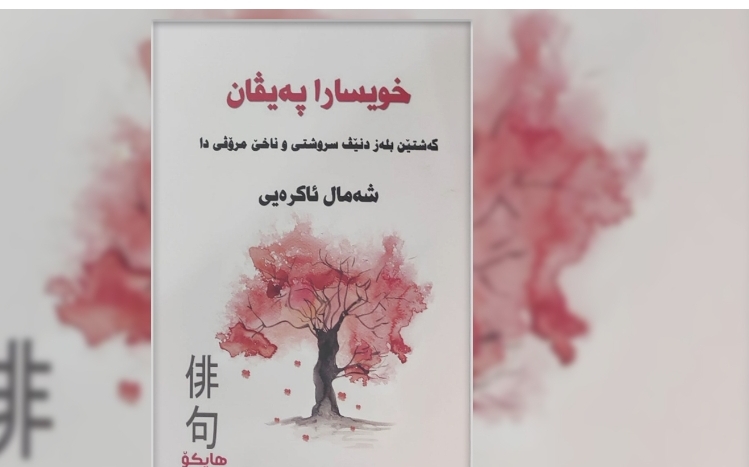
Scope
2024-10-18 01:22
Muhamad
Shamal Akrayi's second book of haiku poetry has been released
Kurdish poet Shamal Akrayi has published his second collection of poems in the Kurdistan Region of Iraq (KRG).
His collection of poems, Khuysaran Peyvan, is published in 118 pages and contains 300 haiku. This is his second work in haiku style after publishing his first book in 2010.
In a detailed introduction, the poet describes at length this style of poetry, which dates back to the eighth century AD and was invented by the Japanese to escape Chinese literature and culture.
Shamal Akrayi, in this new work, has considered the text of the poem in 17 verses, which is divided into (5-7-5) verses and at the end of his introduction hopes that this new work will be satisfied with readers and enjoy it.
7
Read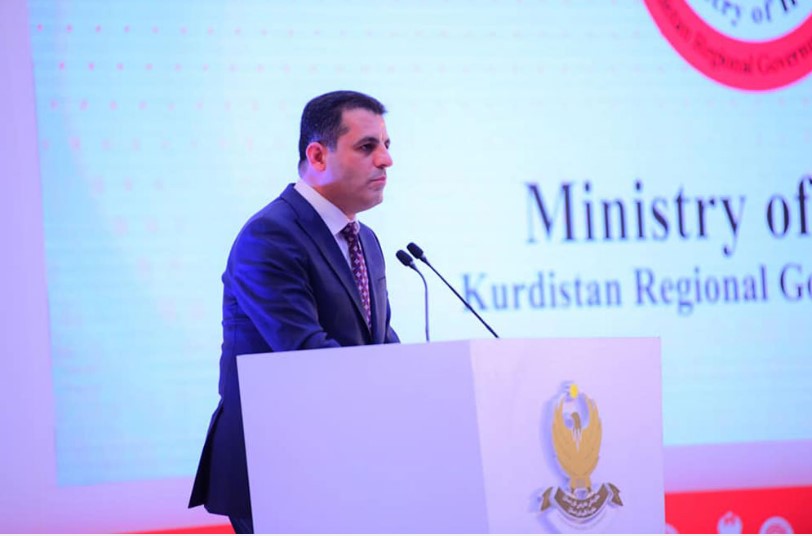
organization
2024-10-18 11:10
Muhamad
د. Saman Barzanji: In the Kurdistan Region, health services are at a very high level
The Kurdistan Regional Government (KRG) has announced that the prices of medicines in all regions of the Kurdistan Region will be unified through a project that is 70% completed so far.
د. "The health services in the Kurdistan Region are at a very high level," Barzanji said in an interview with the Kurdistan Regional Government's Media and Information Office.
Text of the interview/
What is the current level of the coronavirus in Kurdistan?
د. Saman Barzanji: Fortunately, the number of cases in Kurdistan is very low. I can say that there were very few or no admissions to hospitals that month, and the death rate was zero. This is encouraging, but it does not mean that we will stop, because we are still constantly testing suspects and treating those who are infected.
What has made the coronavirus not as dangerous as it used to be?
د. Saman Barzanji: The development of immunity plays a big role in preventing cases from being so dangerous. There are two ways in which the immunity is created. In addition, the virus, called Omicron, mutated and spread, which itself had an easy and moderate form with humans, unlike the one in August, which was very severe. These and the control of the virus in the world has reduced the impact of this virus, but we are constantly monitoring and testing for cases through our teams.
Are the hospitals and doctors reserved for coronavirus patients now the same or have they returned to normal?
د. Saman Barzanji: Many hospitals have returned to normal and there is only one hospital in each city to receive patients. These hospitals have not only been useful for coronavirus patients, because we have had cases such as hemorrhagic fever in these hospitals for treatment, so we have kept a private hospital in each city.
What is the level of the hemorrhagic epidemic in the Kurdistan Region and what have you done for this purpose?
د. Saman Barzanji: Hemorrhagic fever is not a new disease, but it has existed since ancient times, but it needs to be controlled because it is a dangerous disease with a high mortality rate of 50% Uncooked meat and fluids from animals that may be infected and have no symptoms, and are also transmitted to humans through feces. Therefore, it must be prevented by spraying and we have notified the Ministry of Agriculture two months ago and fortunately now our teams with veterinary teams in the Ministry of Agriculture are controlling it. We have specific procedures for identifying and isolating cases.
It is summer and there is another disease called nausea. Is it necessary to prepare for this disease or is it related to the change of seasons?
د. Saman Barzanji: The nature of the disease is that nausea and vomiting increase in two waves every year, especially among children, this is natural and not a new and suspicious case and is currently under control and international standards The purpose has been taken and there are preventions and treatments. Of course, we also take cholera samples every year to make sure the disease is not spreading, so 10% to 20% of patients have stool tests in outpatient clinics to detect cholera cases, so that if there is, we can take different measures.
Have you made any preparations to control the monkeys if they reach the Kurdistan Region?
د. Saman Barzanji: This disease was not in the Middle East, it used to be in several African countries and other countries, but now it is more widespread. We are currently monitoring the situation and we receive daily reports from the World Health Organization. If we know that the disease is close to us, then we will have the ability to diagnose the disease Fear should be created among citizens when it has not reached that level.
What is the health environment in the Kurdistan Region?
د. Saman Barzanji: This is a very broad question. If the issue is health services, it is at a very high level, which is interpreted according to assessment, statistics and health principles. For this reason, international reports, the United Nations and the World Health Organization (WHO) tell us that we are good in terms of health services and we are following up, what is related to the health system and citizen satisfaction There is no system in the world where citizens are hundreds of
4
Read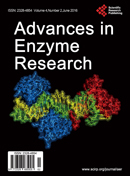
Cancer
2024-10-18 11:03
Muhamad
Advances in Enzyme Research
Alternative Impact Factor
With respect to all articles from this journal for the respective year:
A = total cites in 2022 = 149
B = 2022 cites to articles published in 2020 - 2021 = 10 (this is a subset of A)
C = number of articles published in 2020 - 2021 = 13
2-GJIF for 2022 = D = B/C = 10/13 = 0.77 (TR algorithm, Google citations, data July 2024)
Please see also the List of Citations for AER. An impact factors for e.g. 2022 can only be published once this year is over (e.g. in 2023). At Clarivate Analytics (formerly Thomson Reuters) this is done when all 2022 publications have been processed. Once published, the JCR®JIF for a given year is fixed. In contrast, a GJIF has never a fixed value. Depending on individual activities on the Internet (self-archiving and Green Open Access), some articles published Closed Access in one year may appear online only months or even years later. This has an influence on Google Scholar's citation count and makes it necessary to state the 2-GJIF for a given year always with the date the data was retrieved from Google Scholar. SCIRP may provide updates of the 2-GJIF during the year. E = 2022 self-citations to articles published in 2020 - 2021 = 0 (this is a subset of B)
Self-Cited Rate = E/B = 0/10 = 0 % (definition Rousseau 1999, data July 2024) Journal self-citations are citations to articles in the same journal. A Self-Cited Rate below 20 % is considered acceptable. A higher Self-Cited Rate than this could be explained by a journal's novel or highly specific topic, but could also reveal a journal with excessive self-citations. Please interpret the 2-GJIF with caution:
• Due to differences in the underlying database, the value calculated here for the 2-GJIF can not be compared with a JCR®2-JIF.
• Do not compare journals from different subject fields based on their JIF. Journals in fundamental subject fields tend to have higher impact factors than journals in specialized or applied subject fields.
• Journal metrics should not be used to assess individual authors. Please refer instead to our article metrics provided for each paper: Number of citations from Google Scholar and number of citations from CrossRef. Statistics, Productivity, and Impact
Year in which journal started publishing = Y_start = 2013
Number of full years journal is publishing = Y = 10
Number of articles published since journal start = P_total = 91
Number of articles published in 2022 = P_2022 = 6
Total number of citations since journal start = C_total = 1226
Number of citations in 2022 = C_2022 = A = 149
Average number of citations per year = C_total/Y = 1226/10 = 122.6
Average number of citations per paper = C_total/P_total = 1226/91 = 13.5
with data from July 2024. For any further questions please feel free to contact [email protected].
6
Read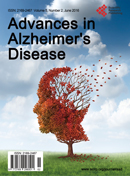
Research
2024-10-18 10:55
Muhamad
Advances in Alzheimer's Disease
Alternative Impact Factor
With respect to all articles from this journal for the respective year:
A = total cites in 2022 = 107
B = 2022 cites to articles published in 2020 - 2021 = 11 (this is a subset of A)
C = number of articles published in 2020 - 2021 = 10
2-GJIF for 2022 = D = B/C = 11/10 = 1.1 (TR algorithm, Google citations, data July 2024)
Please see also the List of Citations for AAD. An impact factors for e.g. 2022 can only be published once this year is over (e.g. in 2023). At Clarivate Analytics (formerly Thomson Reuters) this is done when all 2022 publications have been processed. Once published, the JCR®JIF for a given year is fixed. In contrast, a GJIF has never a fixed value. Depending on individual activities on the Internet (self-archiving and Green Open Access), some articles published Closed Access in one year may appear online only months or even years later. This has an influence on Google Scholar's citation count and makes it necessary to state the 2-GJIF for a given year always with the date the data was retrieved from Google Scholar. SCIRP may provide updates of the 2-GJIF during the year. E = 2022 self-citations to articles published in 2020 - 2021 = 0 (this is a subset of B)
Self-Cited Rate = E/B = 0/11 = 0 % (definition Rousseau 1999, data July 2024) Journal self-citations are citations to articles in the same journal. A Self-Cited Rate below 20 % is considered acceptable. A higher Self-Cited Rate than this could be explained by a journal's novel or highly specific topic, but could also reveal a journal with excessive self-citations. Please interpret the 2-GJIF with caution:
• Due to differences in the underlying database, the value calculated here for the 2-GJIF can not be compared with a JCR®2-JIF.
• Do not compare journals from different subject fields based on their JIF. Journals in fundamental subject fields tend to have higher impact factors than journals in specialized or applied subject fields.
• Journal metrics should not be used to assess individual authors. Please refer instead to our article metrics provided for each paper: Number of citations from Google Scholar and number of citations from CrossRef. Statistics, Productivity, and Impact
Year in which journal started publishing = Y_start = 2012
Number of full years journal is publishing = Y = 11
Number of articles published since journal start = P_total = 112
Number of articles published in 2022 = P_2022 = 5
Total number of citations since journal start = C_total = 1015
Number of citations in 2022 = C_2022 = A = 107
Average number of citations per year = C_total/Y = 1015/11 = 92.3
Average number of citations per paper = C_total/P_total = 1015/112 = 9.1
with data from July 2024. For any further questions please feel free to contact [email protected].
11
Read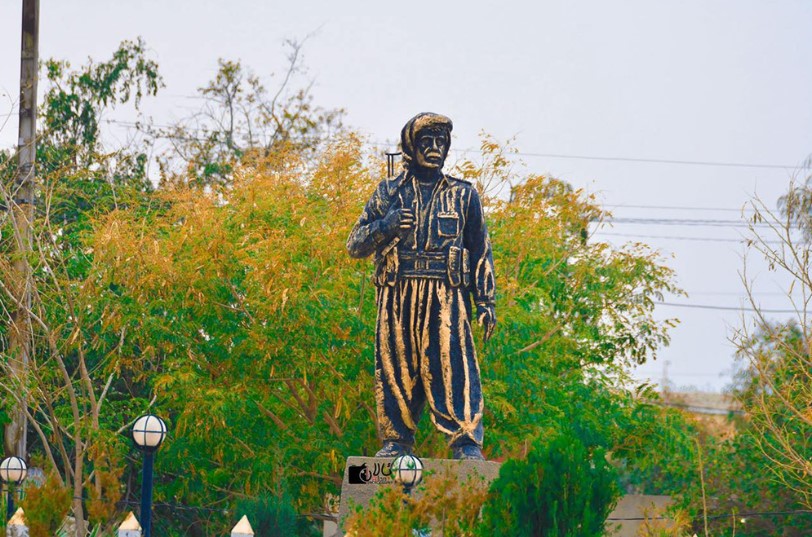
Biography1
2024-10-18 10:49
Muhamad
0
Read
Biography
2024-10-18 10:40
Muhamad
their doctor; The Kurdish-born Turk won the first round of Iran's elections
Although he was born to a Turkish father (who was also from Qasri Shirin) and a Kurdish mother in Mahabad, he considers himself a Turk and does not even allow his children to speak other languages such as Persian at home. He is now the winner of the first round of Iran's presidential election with nearly 10 million votes. However, he must run for a second term with his rival Jalili and win 50+1 votes to become president.
He was born in 1954 in Mahabad, Iran. His mother tongue is Azerbaijani Turkish. He is also fluent in Kurdish. He visited East Kurdistan during the election campaign and gave speeches in Kurdish. He was the head of the Turkish Regions Faction in the 10th session of parliament.
She has three children, whose growth and upbringing she has had charge of after her husband's death.
He completed his primary education in Mahabad and then went to Urmia, where he received a diploma in food science. After the war, he became interested in medicine and studied medicine in Tabriz. He was also the president of Tehran University of Medical Sciences.
Their doctor wants Article 15 of the Iranian constitution to be implemented. "The official and common language and script of the Iranian people is Persian," the article states. Documents, correspondence, official texts and textbooks must be in this language and script, but the use of vernacular and national languages in the press and mass media and the teaching of their literature in schools are free, alongside Persian. On March 7, 2015, he told a parliamentary session, "I am grateful that God created me a Turk, and no one has the right to talk about Turkish culture.
Massoud Pzshkian unexpectedly entered the presidential race on the threshold of the Constitutional Guard Council, which was remarkable in many ways.
He received more than 10 million votes and won the election, but will have to wait for a second round to decide whether he will be president or Saeed Jalili.
The approval of the doctor's candidacy was seen by some as a game by the Islamic Republic government to increase voter turnout, especially since Khamenei had repeatedly said his main goal was high turnout, and others saw it as a ray of hope for the government's reformists.
Their doctor is the only reformist candidate in the presidential election. He is one of those Iranian politicians who doesn't always wear jackets and pants and is known for his simplicity.
He was always present in the political arena of the Islamic Republic during the Iran-Iraq war and afterwards, even if he was not so well known.
This is not the first time Massoud Pzshkian has entered the presidential race. In 2013, he withdrew from the race in favor of Rafsanjani, and in the previous election, the Constitutional Guardian Council refused to allow him to run.
However, he represented Tehran, Azarshahr and Isku in parliament for four terms.
If we go back to their medical background, the minister of health in Mohammad Khatami's second cabinet has considerable experience.
He announced reviving Iran's nuclear talks to ease US sanctions, a soft stance on compulsory hijab and protecting it through "cultural work" as his goals for the presidency.
He has repeatedly stressed that if elected, he does not intend to make any fundamental changes because there are programs and plans in the Islamic Republic that he must adhere to.
"I have no different plan and I follow the policy of the country and Khamenei. I am the defender of the jurisprudential state, Khamenei and the Revolutionary Guards," he said.
6
Read
Laboratory1
2024-10-18 10:32
Muhamad
cobas e 411 analyzer for immunoassay tests (disk system)
The cobas e 411 analyzer is a fully automated analyzer that uses a patented ElectroChemiLuminescence (ECL) technology for immunoassay analysis. It is designed for both quantitative and qualitative in vitro assay determinations for a broad range of applications (including anemia; bone, cardiac and tumor markers; critical care; fertility/hormones; maternal care; and infectious diseases). The analyzer is available as a rack or disk sample handling system.
5
Read
Laboratory
2024-10-18 10:14
Muhamad
24 medical laboratories closed in Erbil
24 private medical laboratories were closed in Erbil and 21 other laboratories were severely punished for not having a license and not complying with the guidelines.
24 private medical laboratories have been closed and 21 others have been severely punished for not complying with the guidelines, the Erbil health department said.
The Erbil General Directorate of Health said in a statement that 24 laboratories that operated without a license and 21 private laboratories that did not implement the guidelines were closed They were selected.
4
Read
Medicine
2024-10-18 10:07
Muhamad
0
Read
Antibiotics
2024-10-18 12:12
Muhamad
The link between arthritis drugs and chronic COVID-19 disease is being revealed
Researchers at the University of Virginia College of Medicine have identified a possible cure for chronic respiratory symptoms after discovering an unknown cause of the condition in the lungs.
Researchers at the University of Virginia, led by Dr. Ji Sun, found that infection with Covid-19 causes radical changes in immune cells in lung tissue, causing scarring and persistent inflammation even after the initial infection has passed.
They believe this persistent infection causes chronic respiratory symptoms, such as cough and difficulty breathing, associated with chronic Covid-1
Can chronic inflammation be stopped?
The new study suggests that doctors may be able to stop this chronic inflammation by using a class of drugs, including baricitinib, previously used to treat rheumatoid arthritis, an anti-inflammatory drug that previously received emergency approval from the Federal Food and Drug Administration It is seen in Covid-1
"Our study identified the underlying cause of chronic respiratory complications of Covid by comparing both clinical samples and a related animal model," said Sun, of the University of Virginia's Carter Center for Immunology Research and Department of Infection to design "clinical studies in a rational manner, in order to reuse these FDA-approved drugs to treat chronic Covid-19 infections.
For these patients, infection with COVID-19 turns into a seemingly endless trial, with symptoms lasting weeks, months, or even years.
Symptoms of chronic COVID-1
Symptoms of chronic COPD can range from discomfort to weakness, for example respiratory symptoms can include shortness of breath, chest pain and even chronic lung scarring known as interstitial lung disease.
Previous studies on chronic COVID-19 looked for answers in patients' blood, but Sun and his team wanted to see what changes occurred in the lung tissue itself, so researchers at the University of Virginia looked at cell samples collected from the lower airways of both laboratory mice and human patients.
In both cases, they found that immune cells known as macrophages and T cells had gone mad and reacted defectively and harmfully.
These cells normally help the body fight disease, but in this case, they have not stopped fighting, even after the initial infection has passed.
What conclusions did the researchers reach?
The researchers found that macrophages poured into the lungs in abnormal numbers and developed tissue scars. Meanwhile, the T cells were secreting a substance called interferon, which stimulates ongoing inflammation.
Sun and his team believe that doctors may be able to break this cycle of inflammation by using drugs already approved to treat the damaging inflammation seen in rheumatoid arthritis, a chronic autoimmune disease that affects the joints.
More research will be needed, but Sun hopes the University of Virginia's new findings will lead to much-needed new treatments for patients with chronic respiratory symptoms.
Source: Medical Express
7
Read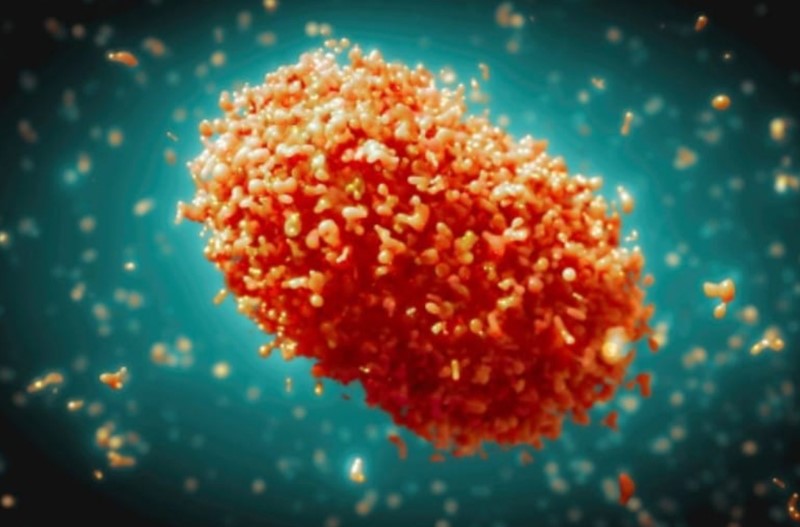
Speciality
2024-10-17 11:45
Muhamad
What are the symptoms and causes of monkeypox?
Now, after the coronavirus, another disease has become a threat to the world. The World Health Organization (WHO) has declared a state of emergency in 13 countries. The website of the Sulaimani Health Directorate provides information about this disease:
Embox monkeypox is caused by a virus and the most common symptoms are painful skin infection that lasts for two to four weeks, accompanied by fever, headache, joint pain and back pain.
Monkeypox is transmitted from person to person through physical contact with an infected person or touching contaminated objects or animals.
Causes of monkeypox transmission:
- Contact with infected people through touching and sexual activity.
- Touching and kissing the skin of the infected person.
- Touching the face while speaking or breathing.
- Touching infected objects.
- Touching infected animals through hunting, slaughter and use of their meat.
Monkeypox virus was first discovered in 1958 in Denmark among monkeys used for medical experiments. In 1970, human infection was first reported in the Democratic Republic of the Congo.
Symptoms of monkeypox:
Symptoms appear within a week and last up to four weeks, with some people with weakened immune systems lasting longer.
- Skin infections and throat infections.
- Nausea, headache and weakness.
- Muscle pain and back pain.
- Swelling of lymph nodes.
Monkeypox appears as an infection of the skin, filling the affected area with fluid and causing severe and painful itching. During healing, the skin becomes dry and flaky, and most patients recover within 2 to 4 weeks.
* Guidelines for people with monkeypox:
* Notify anyone you have recently mixed with.
* Avoid sexual intercourse.
* Stay at home until the infected skin disappears and a new layer of skin forms.
* Cover affected areas and wear a mask when with others.
* Wash hands with soap and water, especially before and after touching the infected area.
* Do not touch or injure the affected area, which can slow healing and spread to other parts of the body.
In 2022, monkeypox spread suddenly across Europe and both North and South America, infecting 87,000 people and killing 112 people in 110 countries. The World Health Organization has declared monkeypox a global health emergency and is preparing to prevent the spread it's an epidemic.
7
Read
Speciality2
2024-10-17 10:57
Muhamad
2
Read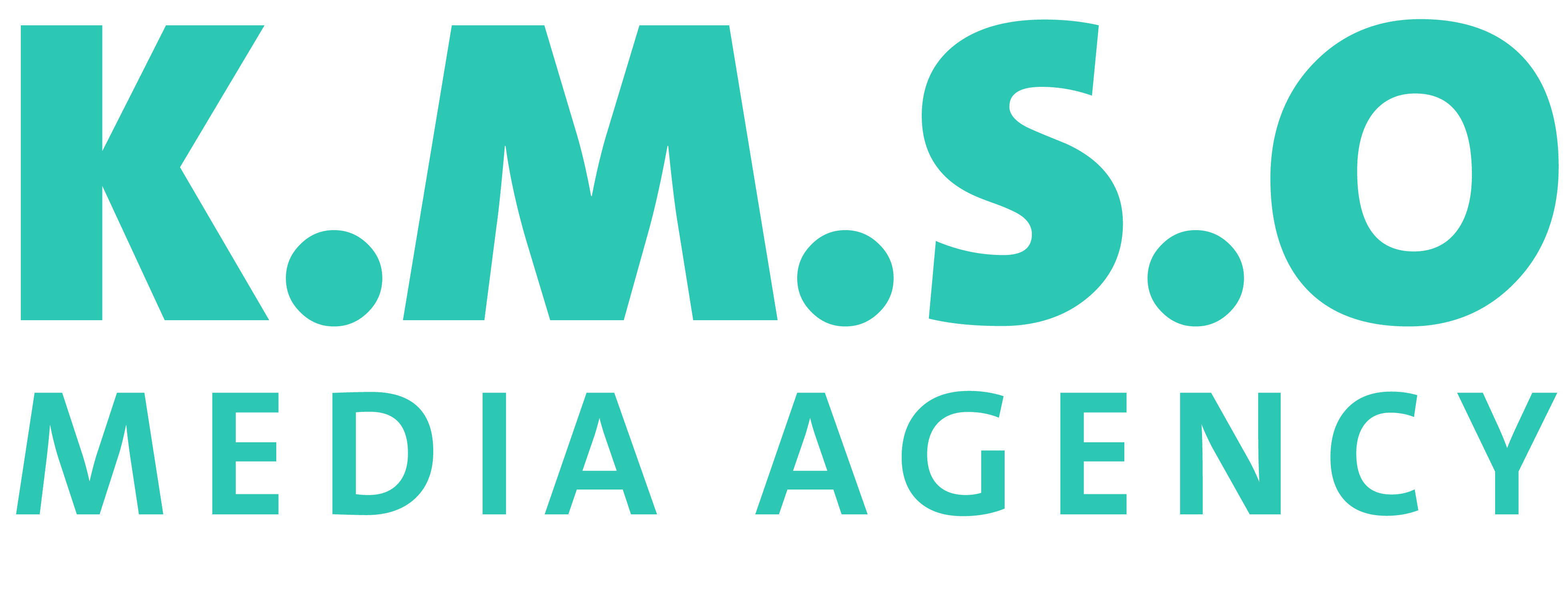
Leading academic platform that is exclusive
with medical publications and research
Health in Kurdistan, Iraq and the world
About
Sections